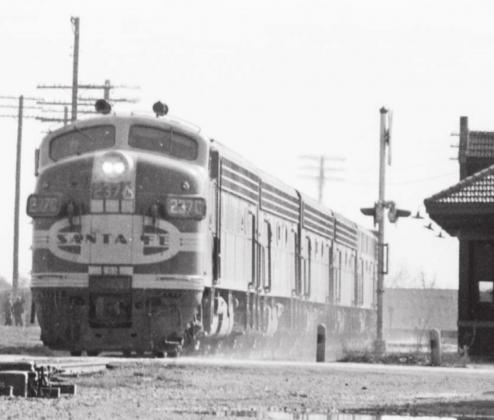Steam engines were the main locomotive power used when railroads were first becoming important in the 1800s. Steam continued to be used through World War II. But after the war, diesels power began to be used more often by the major railroads. More powerful diesel units continued to be developed in the 1940s and 1950s. They did the job and were easier to maintain. When the GE Electro-Motive F7 units such as this one, came into use in the mid 1950s, they were more than powerful enough for the job. Additional engines could be added and electrically connected to the main locomotive so they could be all operated by one engineer when additional power was needed.
Santa Fe F7 units were used all over the United States by the late 1950s and 1960s. This Santa Fe blue and yellow freight train came through Dublin about 1968 with 4 “B” units behind the lead engine. The dust thrown up by the engines suggests that the train was making a run from Brownwood to Fort Worth and had no intention of slowing down.
These were seen daily in Dublin servicing the peanut mill, lumber yards and switching box cars in the Santa Fe yard. Freight was sometimes dropped off at the Santa Fe freight station that was located in the western part of the Dublin train yard next to highway 6. That freight station later was used by Poston Feed Store.
Engine number 237C is seen here in the lead. Years later this same engine was taken to the shops in Cleburne, Texas to be rebuilt. It’s cab design would be changed and would later be sold to Amtrak for use on passenger trains.

